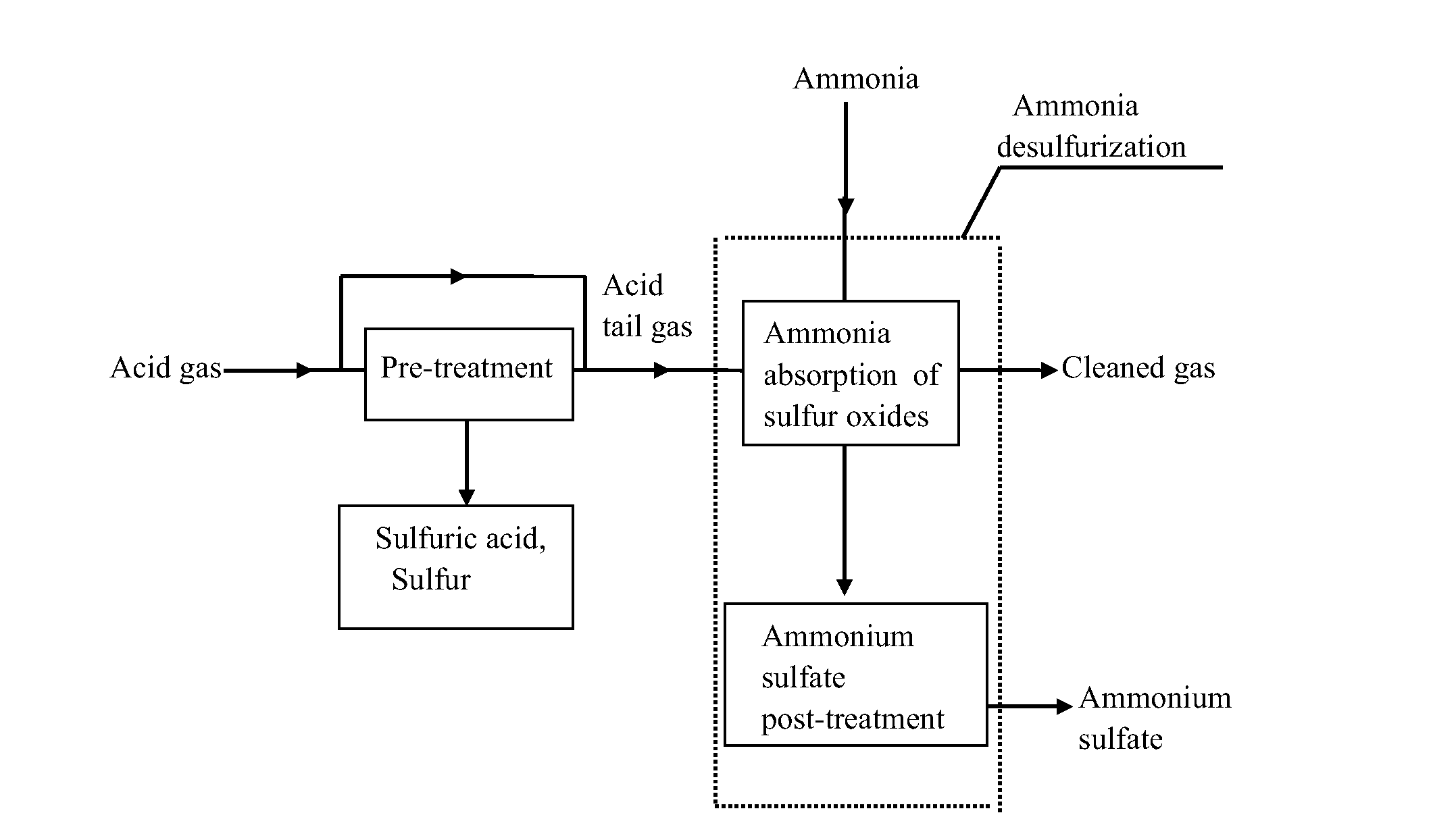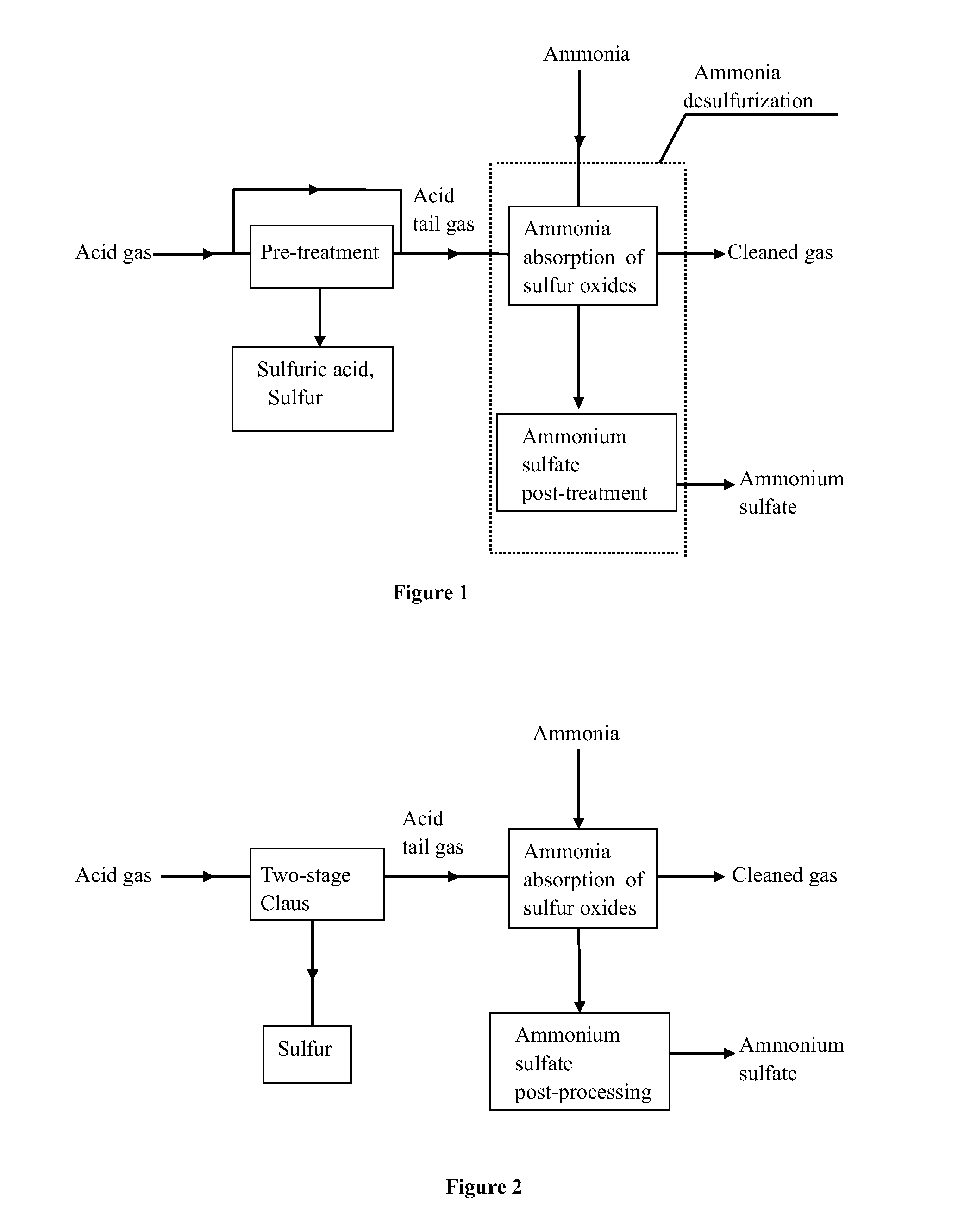Effective removal of acidic sulfide gas using ammonia-based desulfurization
a technology of acidic sulfide and desulfurization, which is applied in the direction of gas treatment, gaseous fuels, inorganic chemistry, etc., can solve the problems of low purity of sulfite products, inability to directly emitted without further treatment, and inability to meet environmental protection emission standards, etc., to achieve effective removal of acidic sulfide gas, high sulfur recovery, and high sulfur recovery
- Summary
- Abstract
- Description
- Claims
- Application Information
AI Technical Summary
Benefits of technology
Problems solved by technology
Method used
Image
Examples
examples
1. Acid Gas Desulfurization Treatment Devices for a Coal Chemical Project
[0063]Acid gas comes from a coal-to-methanol and acetic acid project. After the two-stage Claus process, the total amount of the acid tail gas (Claus tail gas) is 9,500 Nm3 / h, the temperature is 195° C., the concentration of sulfur dioxide is 23,000 mg / Nm3 to 29,700 mg / Nm3, and the other components are nitrogen, carbon dioxide, water vapor, oxygen, etc. The pressure is 0.023 MPa (g), and the desulfurization reagent is 99.6% liquid ammonia.
[0064]The process flow diagram is shown in FIG. 2. The acid gas contains 30%-45% (by volume) hydrogen sulfide, all the sulfur in the acid gas is converted to elemental sulfur and sulfur dioxide after the pre-treatment, and sulfur dioxide concentration in acid tail gas after the pre-treatment meets the requirements for the ammonia absorption of the sulfur oxides. Compared to the EuroClaus process, the method for effectively removing acidic sulfide gas using ammonia-based desulf...
PUM
| Property | Measurement | Unit |
|---|---|---|
| concentration | aaaaa | aaaaa |
| concentration | aaaaa | aaaaa |
| concentration | aaaaa | aaaaa |
Abstract
Description
Claims
Application Information
 Login to View More
Login to View More - R&D
- Intellectual Property
- Life Sciences
- Materials
- Tech Scout
- Unparalleled Data Quality
- Higher Quality Content
- 60% Fewer Hallucinations
Browse by: Latest US Patents, China's latest patents, Technical Efficacy Thesaurus, Application Domain, Technology Topic, Popular Technical Reports.
© 2025 PatSnap. All rights reserved.Legal|Privacy policy|Modern Slavery Act Transparency Statement|Sitemap|About US| Contact US: help@patsnap.com



